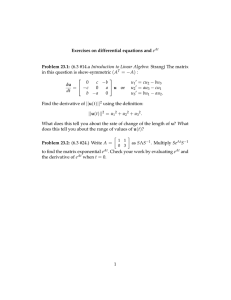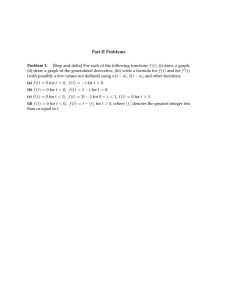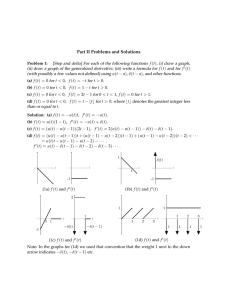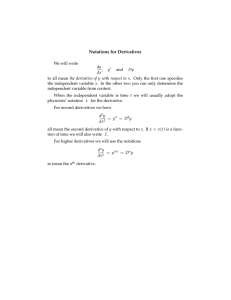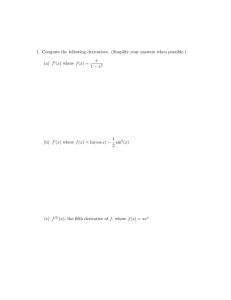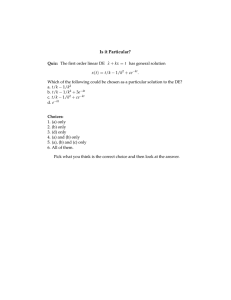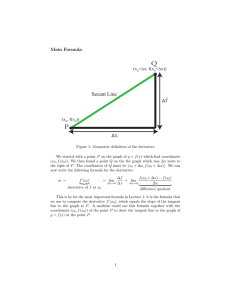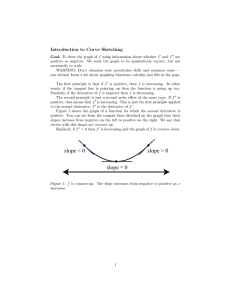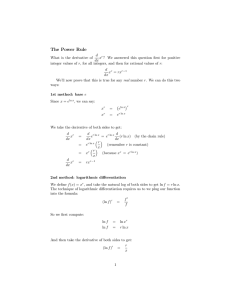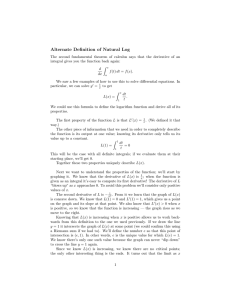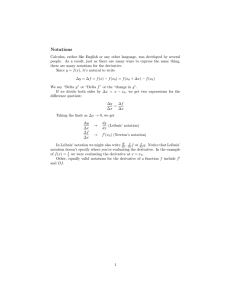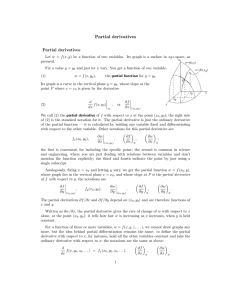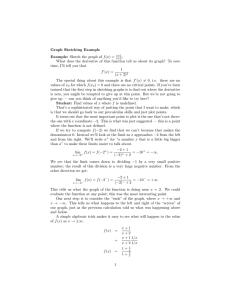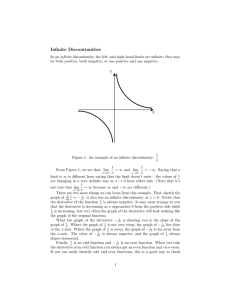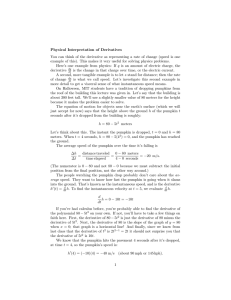Example: D x
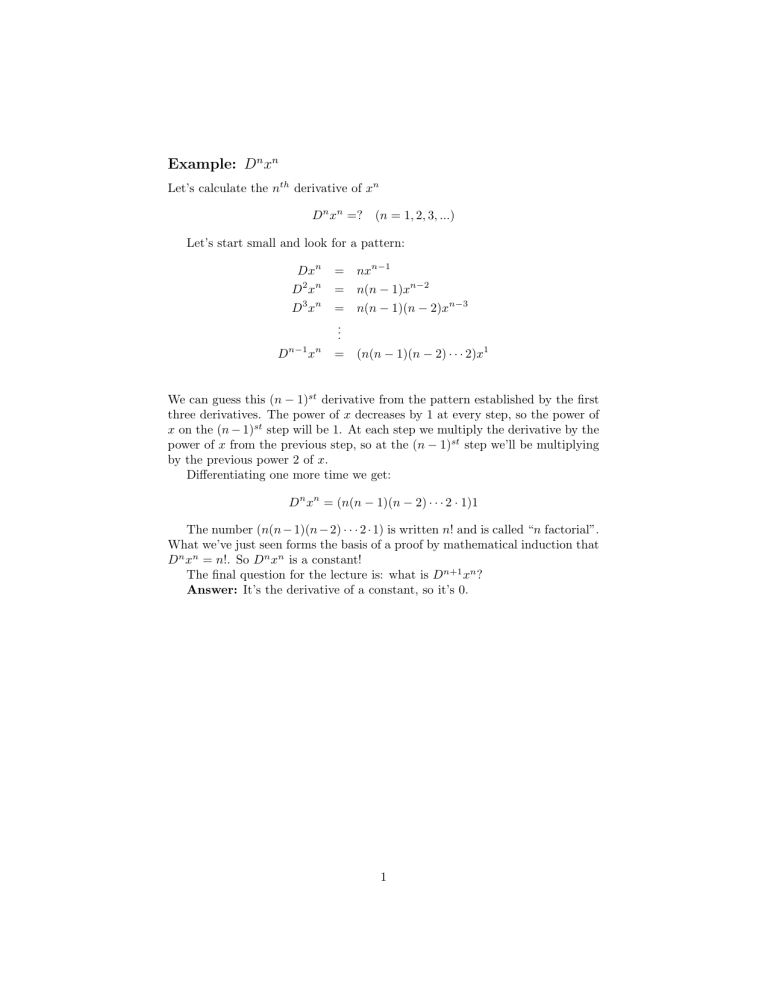
Example:
D n x n
Let’s calculate the n th derivative of x n
D n x n
=?
( n = 1 , 2 , 3 , ...
)
Let’s start small and look for a pattern:
Dx n
D
2 x n
D
3 x n
D n − 1 x n
= nx n − 1
=
= n ( n − 1) x n − 2 n ( n − 1)( n − 2) x n − 3
.
.
.
= ( n ( n − 1)( n − 2) · · · 2) x
1
We can guess this ( n − 1) st derivative from the pattern established by the first three derivatives.
The power of x decreases by 1 at every step, so the power of x on the ( n − 1) st step will be 1.
At each step we multiply the derivative by the power of x from the previous step, so at the ( n − 1) st step we’ll be multiplying by the previous power 2 of x .
Differentiating one more time we get:
D n x n
= ( n ( n − 1)( n − 2) · · · 2 1)1
The number ( n ( n − 1)( n − 2) · · · 2 · 1) is written n !
and is called “ n factorial”.
What we’ve just seen forms the basis of a proof by mathematical induction that
D n x n = n !.
So D n x n is a constant!
The final question for the lecture is: what is D n +1 x n ?
Answer: It’s the derivative of a constant, so it’s 0.
1
MIT OpenCourseWare http://ocw.mit.edu
18.01SC Single Variable Calculus��
Fall 2010 ��
For information about citing these materials or our Terms of Use, visit: http://ocw.mit.edu/terms .
